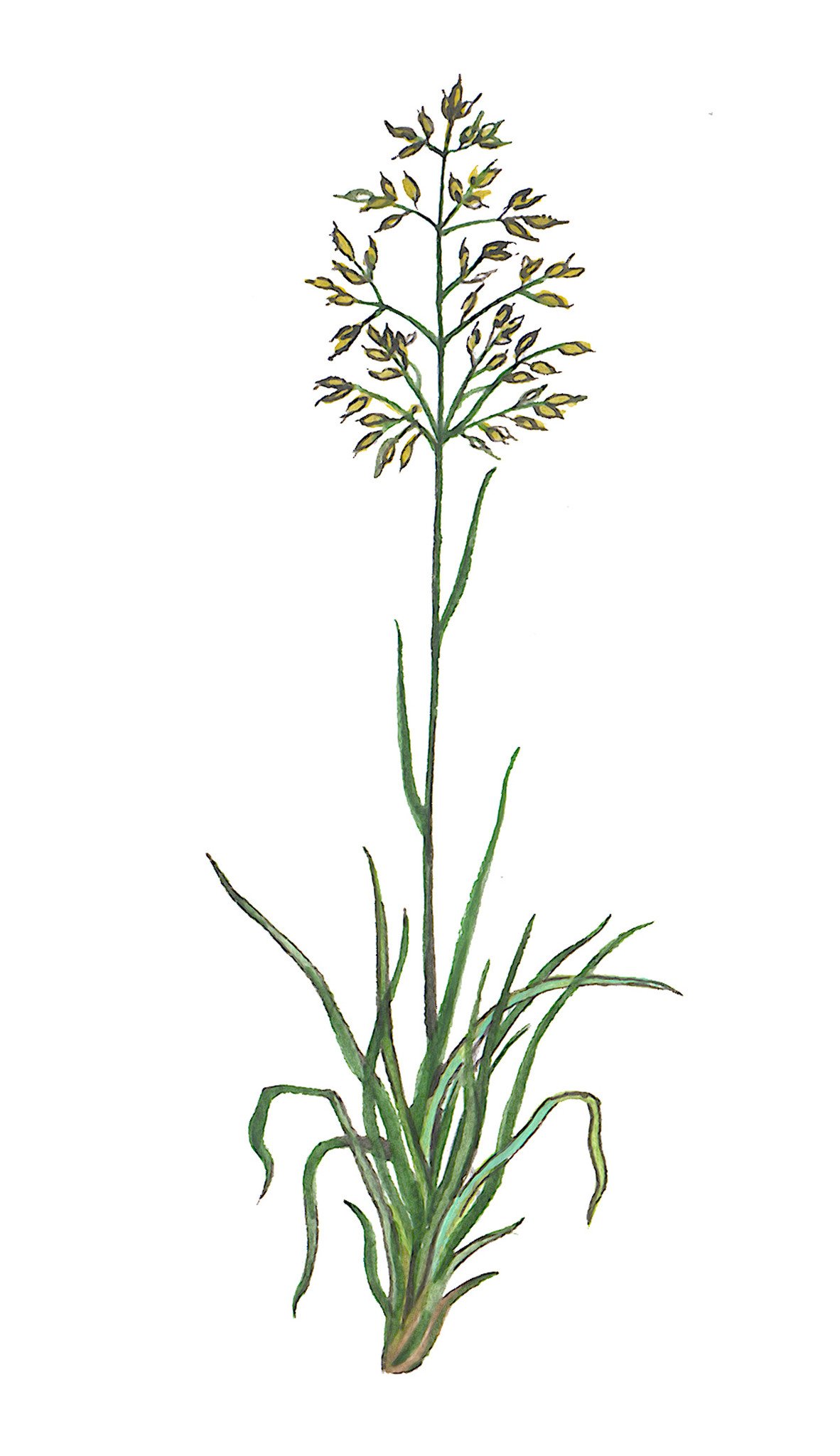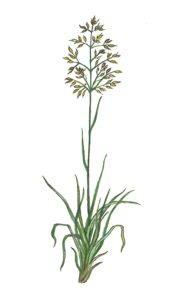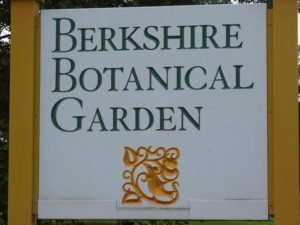Be-a-Better-Gardener
Late Summer Lawn Care
Kentucky bluegrass — unmatched for looks.
By Thomas Christopher
Contrary to popular belief, spring is not the best season for planting or reseeding a lawn. The weather and sunlight in spring is particularly conducive to the growth of annual weeds, and these are tough competitors for turf grasses. By contrast, late summer and early fall, as the weather cools and the days shorten, is ideal for grass growth and less so for weeds. Given the choice, you should do your lawn planting or renovation now.
The tools, grass types, and techniques you employ will depend largely on the scale of the job, as well as your goals. So, for example, if all you want is what I have heard referred to as a “freedom lawn,” a mixture of green that includes all sorts of weeds as well as grasses – anything that you can cut with a lawn mower – then your lawn repairs may be limited to patching bare spots. That can be accomplished with just a rake, some seed, and perhaps a thin blanket of recycled-paper-pellet mulch.
If you are planning a more ambitious renovation of a thin, threadbare lawn, you’ll want to rent an “over-seeder.” Available at most tool rental businesses, an overseeder simultaneously roughs up the surface of the soil while sprinkling it with seed.
In any case you’ll need a sprinkler or multiple sprinklers, depending on the size of the area you have seeded. It’s essential to moisten the surface of the soil at least twice a day (morning and evening) for the first three weeks or so after you sow grass seed to ensure good germination.
The most important decision, though, in any lawn repair or renovation is the selection of the grass seed. Your choice in this matter will largely determine the success of your work. There are several factors to consider in making this decision.
The first is the quality of your soil, which can be determined by a soil test available from your state’s agricultural university. Be sure to request that the lab reports to you on soil texture and organic content as well as nutrient content.
If your soil is a good loam and well-drained, then your lawn is a candidate for the classic Kentucky bluegrass or a perennial ryegrass. Both make a fine lawn; the Kentucky bluegrass is unmatched for looks, while the perennial rye is faster to establish itself, more wear-resistant, more resistant to diseases and naturally weed-suppressive. Often, the two types of grasses are blended together to produce a lawn with the advantages of both. If your soil is sandy and nutrient-poor, then, so long as it is well drained, you’ll do better with a mixture of fine-leaved fescues, which are drought-resistant, tolerate less fertile soils, and have the advantage of requiring less frequent mowing. Finally, there are also the turf-type tall fescues, which make a somewhat coarser textured lawn but which are very pest-resistant, and because they are deep-rooted, can typically withstand dry spells without irrigation.
One thing to look for on the grass seed label when shopping are the words “endophyte enhanced.” Endophytic fungi are beneficial organisms that, when they infect the grass seed, make the resulting lawn naturally pest and disease resistant. Perennial ryegrasses, fine fescues, and turf-type tall fescues may all be endophyte enhanced; this is not available in bluegrasses.
Another environmental factor to consider is the prevalence of sun or shade in your yard. No turf grass grows well in really dense shade, but the fine fescues – chewings, creeping red, and hard fescues – are the most tolerant, thriving on well-drained or dry sites that receive only four hours of direct sunlight a day. Somewhat less shade-tolerant but still good for areas with limited direct sunlight are the turf-type tall fescues; they grow better in areas of moist shade. For areas that are shady and perpetually damp, you would do best with a rough bluegrass (Poa trivialis). Kentucky bluegrass and perennial ryegrass are, by and large, best limited to areas with full sun.
You can, of course, buy pre-packaged “sun” or “shade” grass seed mixes. In doing this, however, you abdicate your control over adaptation to other factors such as soil type. Whatever grass seed you buy, though, make sure, it is of a named variety. Generic Kentucky bluegrass, for example, is likely to lack the disease-resistance that has been bred into types such as ‘Midnight’ and ‘Legend’. Saving money on your grass seed is a poor economy, one that you’ll be sure to regret in the long run.
Thomas Christopher is the co-author of “Garden Revolution” (Timber Press, 2016) and is a volunteer at Berkshire Botanical Garden. berkshirebotanical.org
Be-a-Better-Gardener is a community service of Berkshire Botanical Garden, one of the nation’s oldest botanical gardens in Stockbridge, MA. Its mission to provide knowledge of gardening and the environment through 25 display gardens and a diverse range of classes informs and inspires thousands of students and visitors on horticultural topics every year. Thomas Christopher is the co-author of Garden Revolution (Timber press, 2016) and is a volunteer at Berkshire Botanical Garden. berkshirebotanical.org.




